How to Draw a Spring Landscape

The seasons wonderfully illustrate the order of nature, each with its distinctive traits that make it unique and recognizable. Spring, in particular, is synonymous with life: green reemerges after a long slumber, accompanied by flowers, animals, and the gentle morning light.
Today, I bring you a tutorial to draw a landscape that unites the most emblematic elements of this season.

Drawing a spring landscape step by step
We begin our composition with the basic structure of a landscape: a plain crossed by a small stream and framed by two hills, with mountains in the background.
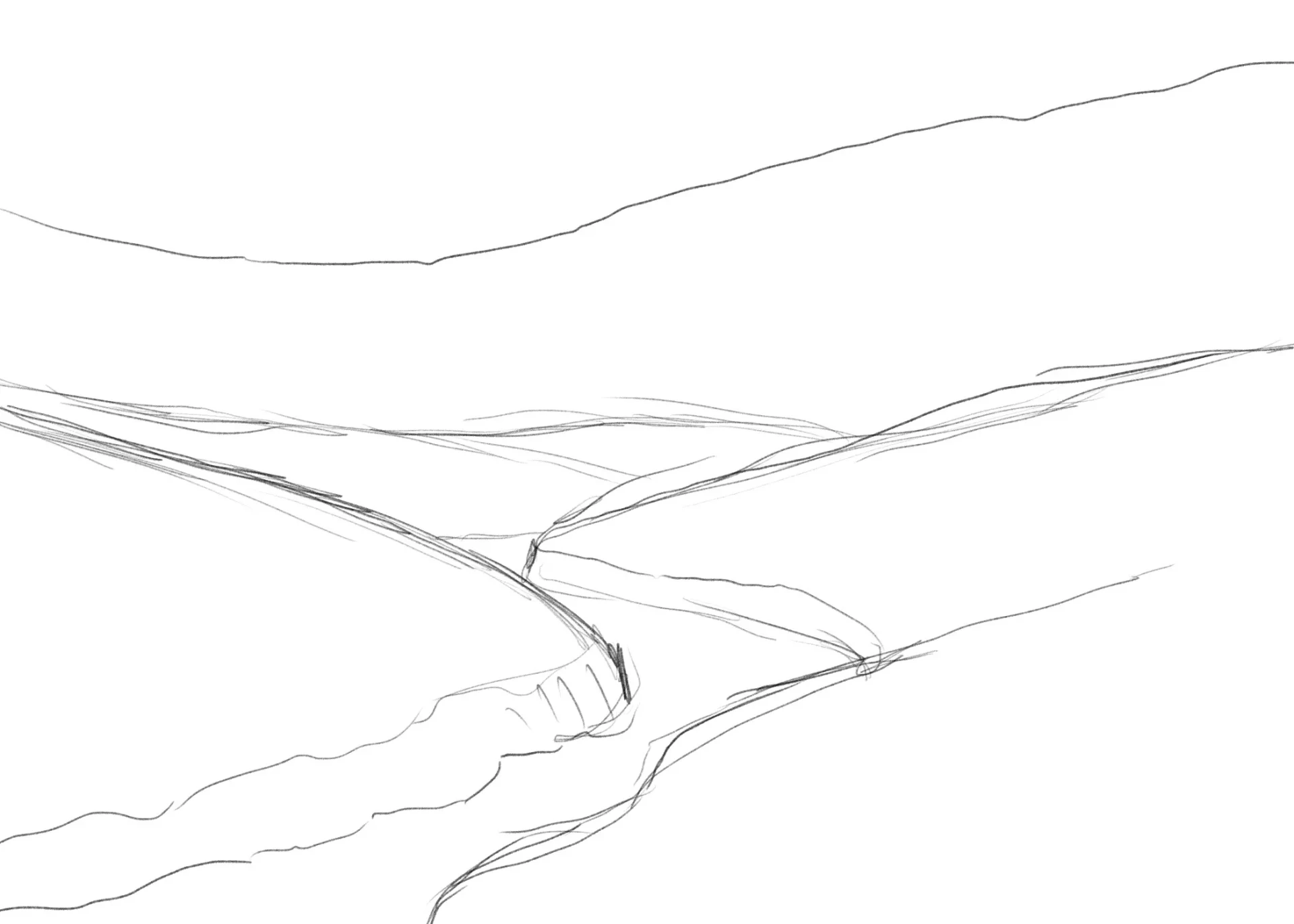
In the spring, trees come back to life: so draw a few on each side, then add others on a secondary plane, with abundant foliage.
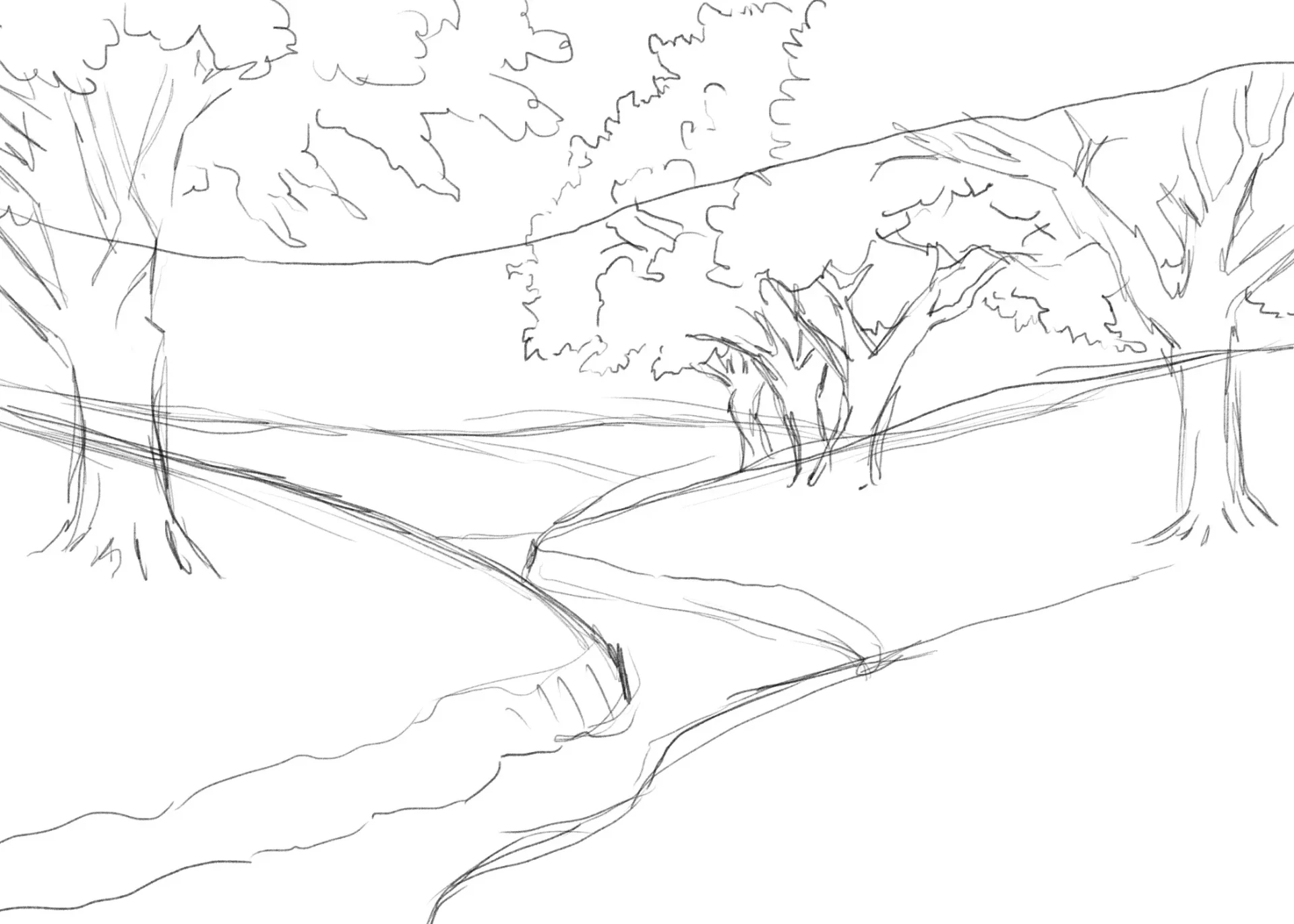
In the background, add even more trees, much smaller and less detailed: some irregular lines are enough to indicate trunks and branches.
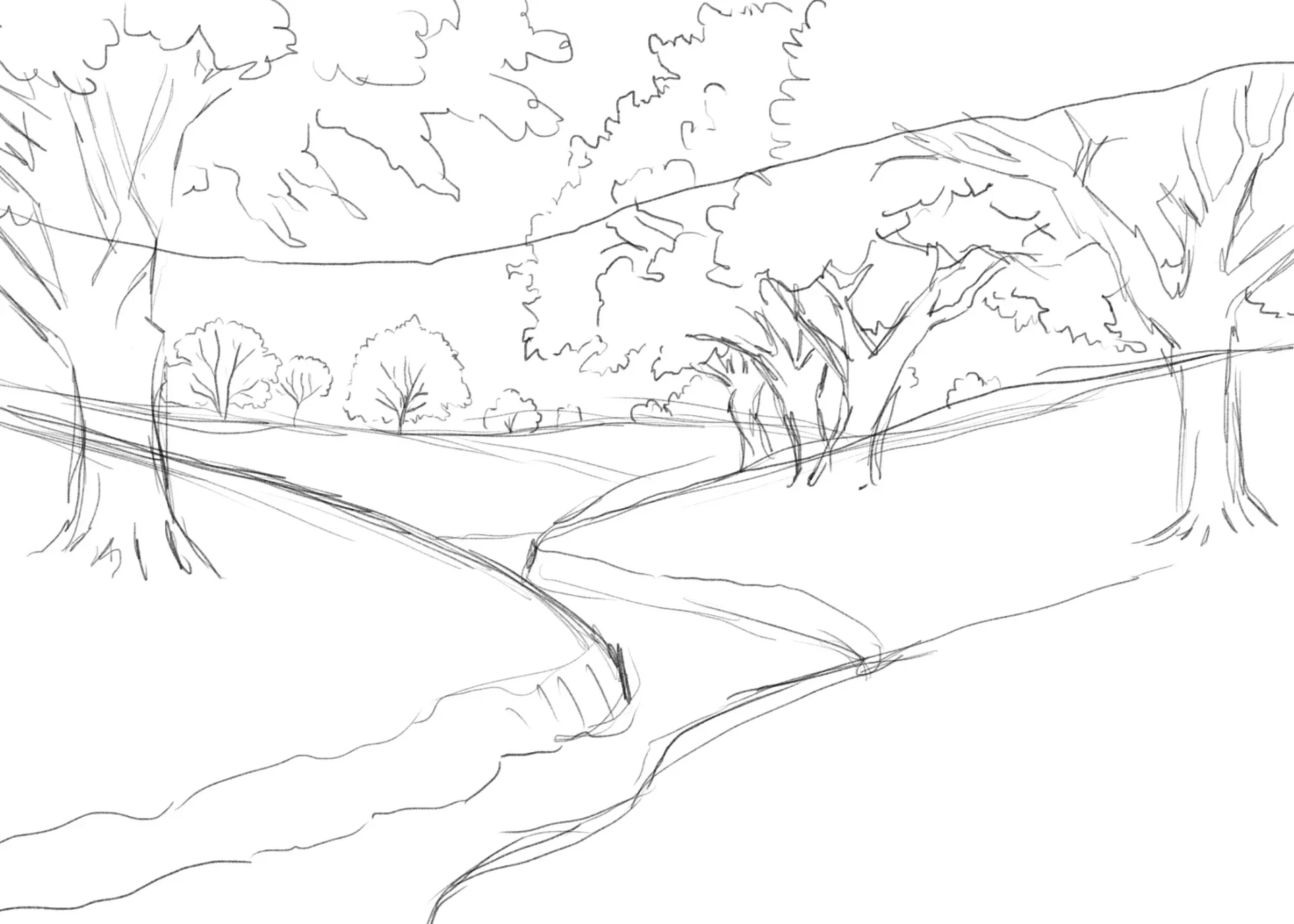
Finally, sketch some flowers in the foreground, surrounded by tall grass and leaves. At this stage, there's no need to go into detail.

Adding color to the drawing
It is time to bring our composition to life. Forget the cold tones of winter and the excess saturation of summer: here, we will focus on a palette of bright yet light colors. As often in a drawing or painting, it's better to start with the background, especially in a traditional technique.
For this spring landscape, let's sketch a sunrise: the sun emerging between the mountains will flood the sky with a gradient of light blue, almost mint, laid in soft washes to symbolize the renewal of the season.

Then move on to the plain by applying a softened green, without too much saturation. Reserve a brownish strip in the center to suggest the earth visible under the creek bed.
Finally, treat the mountains in the background with a dull green, almost bordering on gray, to enhance the effect of depth and distance.

It is also time to color the trees, adding more branches. Vary the shades of brown to differentiate the planes (second, third).
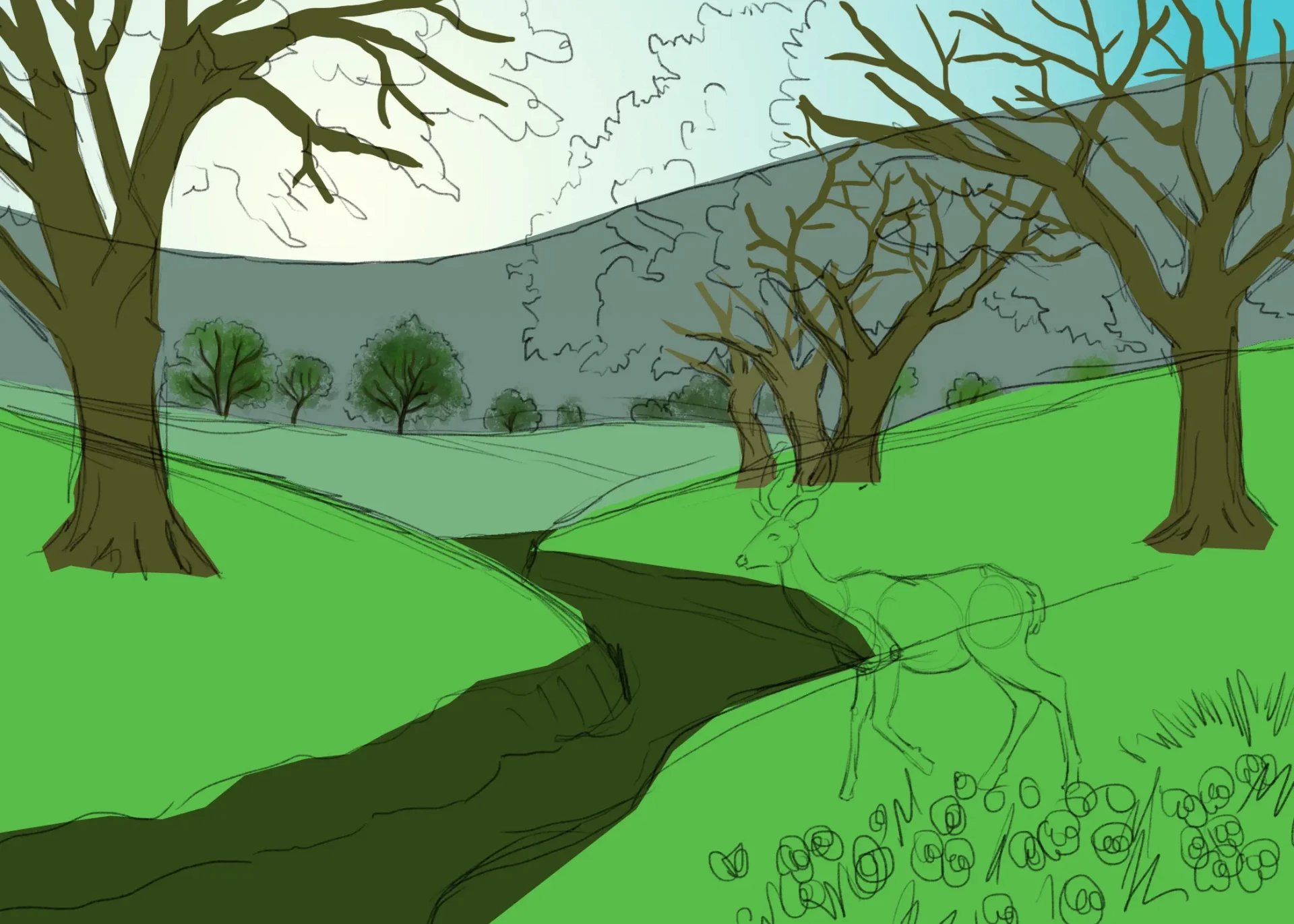
Drawing texture and light
Work on the texture and light effects to suggest a true spring sunrise. Apply your touches of green by varying the shades, some slightly bluish, others tinged with yellow, while respecting the direction of the light to give relief and coherence to your landscape.
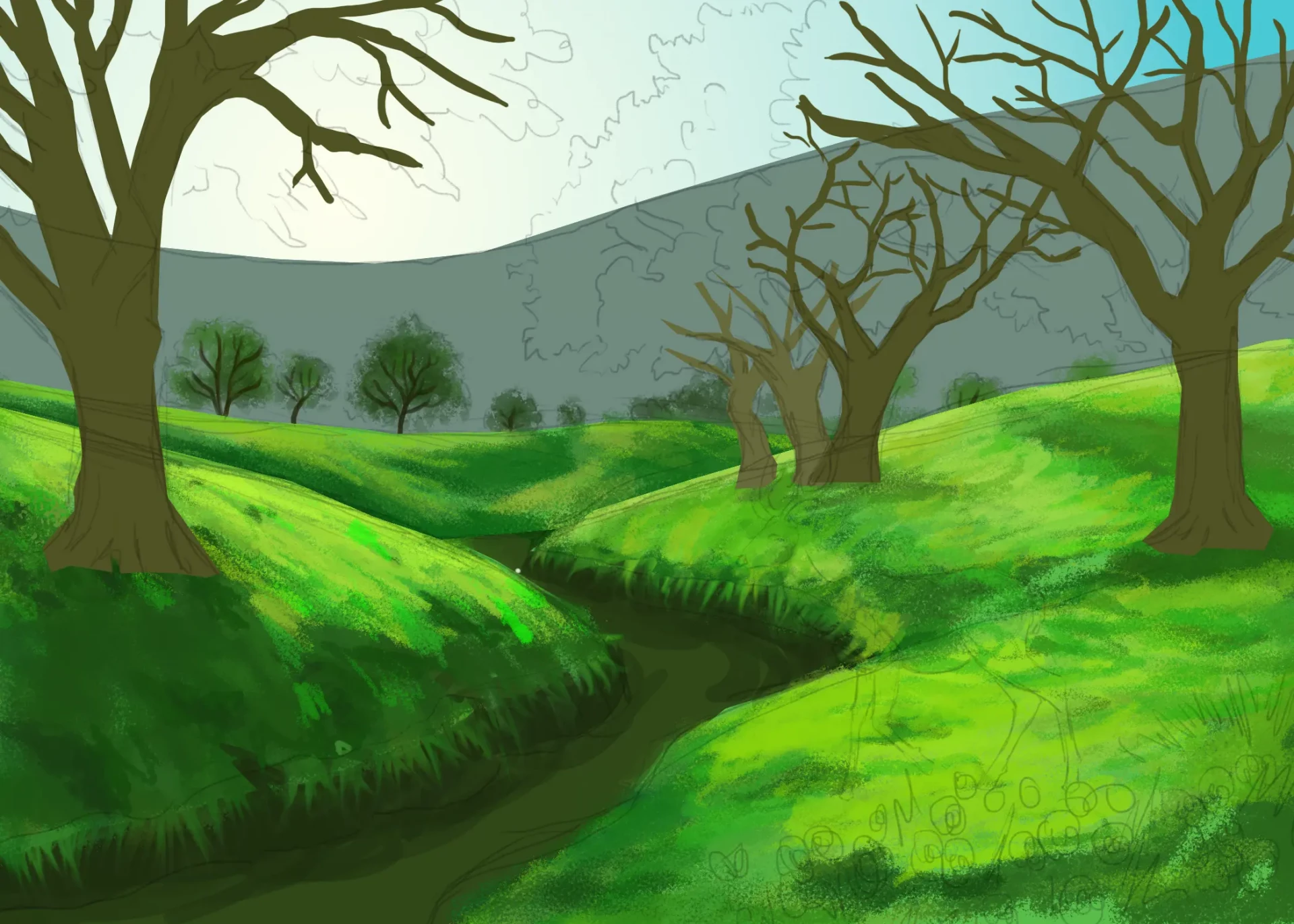
Before drawing the color of the water, sketch some rocks. Work on them with neutral tones and well-defined outlines, then add highlights of pure white to suggest the brightness of moisture and give the illusion of still wet stones.
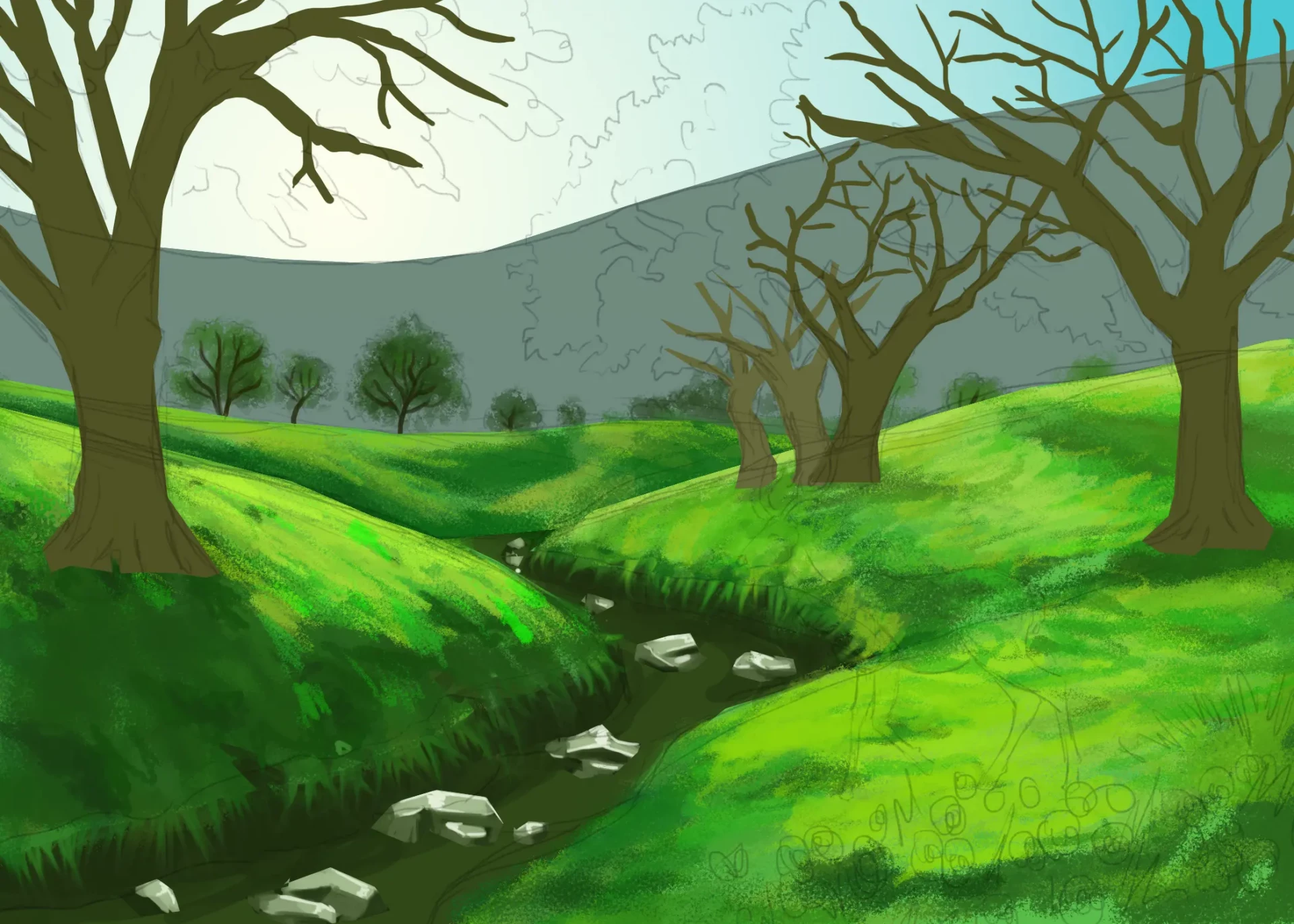
Then, fill in the stream: apply transparent layers of very unsaturated colors (gray with a hint of green, yellow, light blue, and white). Add white touches near the rocks and draw fine lines to mimic the flow of the water.
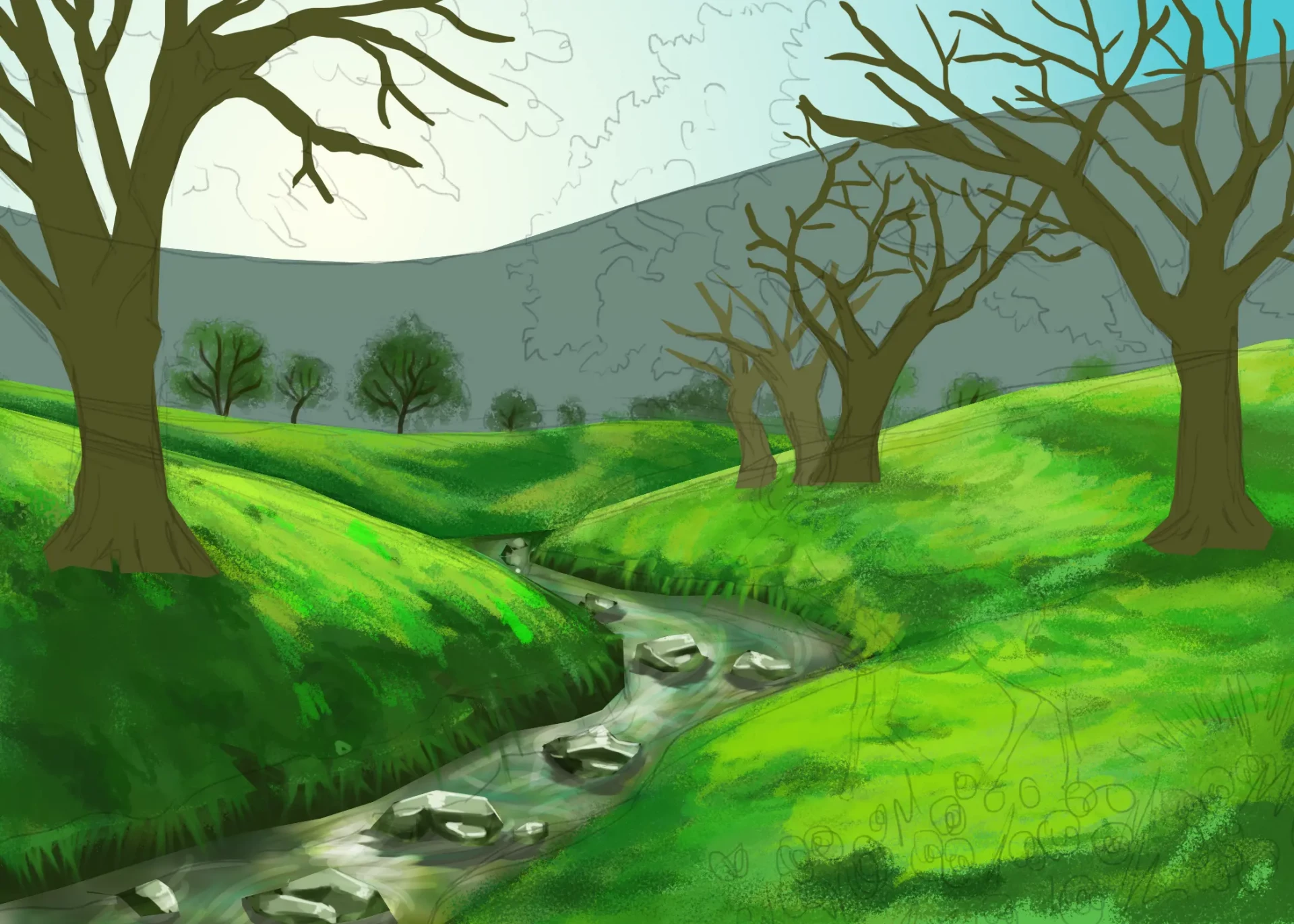
It's not possible to talk about spring without mentioning flowers: scatter the entire meadow with small colorful touches. They don't need to be perfect; on the contrary, irregularity makes them more natural. Distribute them organically, almost randomly, or in small groups.
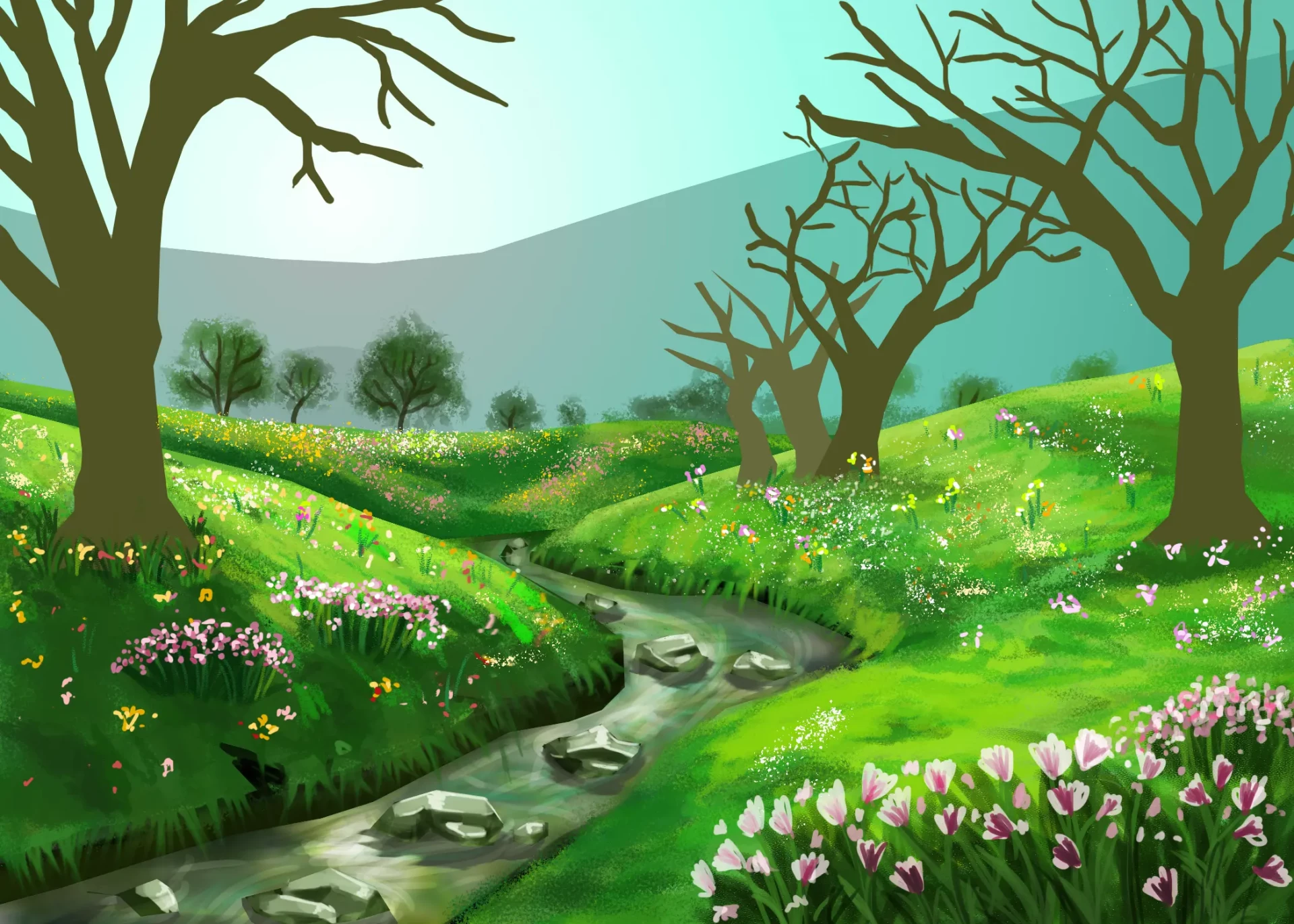
Before returning to the trees for a fundamental detail: light. Until now, we only had a gradient in the sky. Now, the light must directly influence the landscape. So, draw a yellow circle and diffuse it widely to gently bathe mountains and plain, also marking the direction of the trees' shadows.
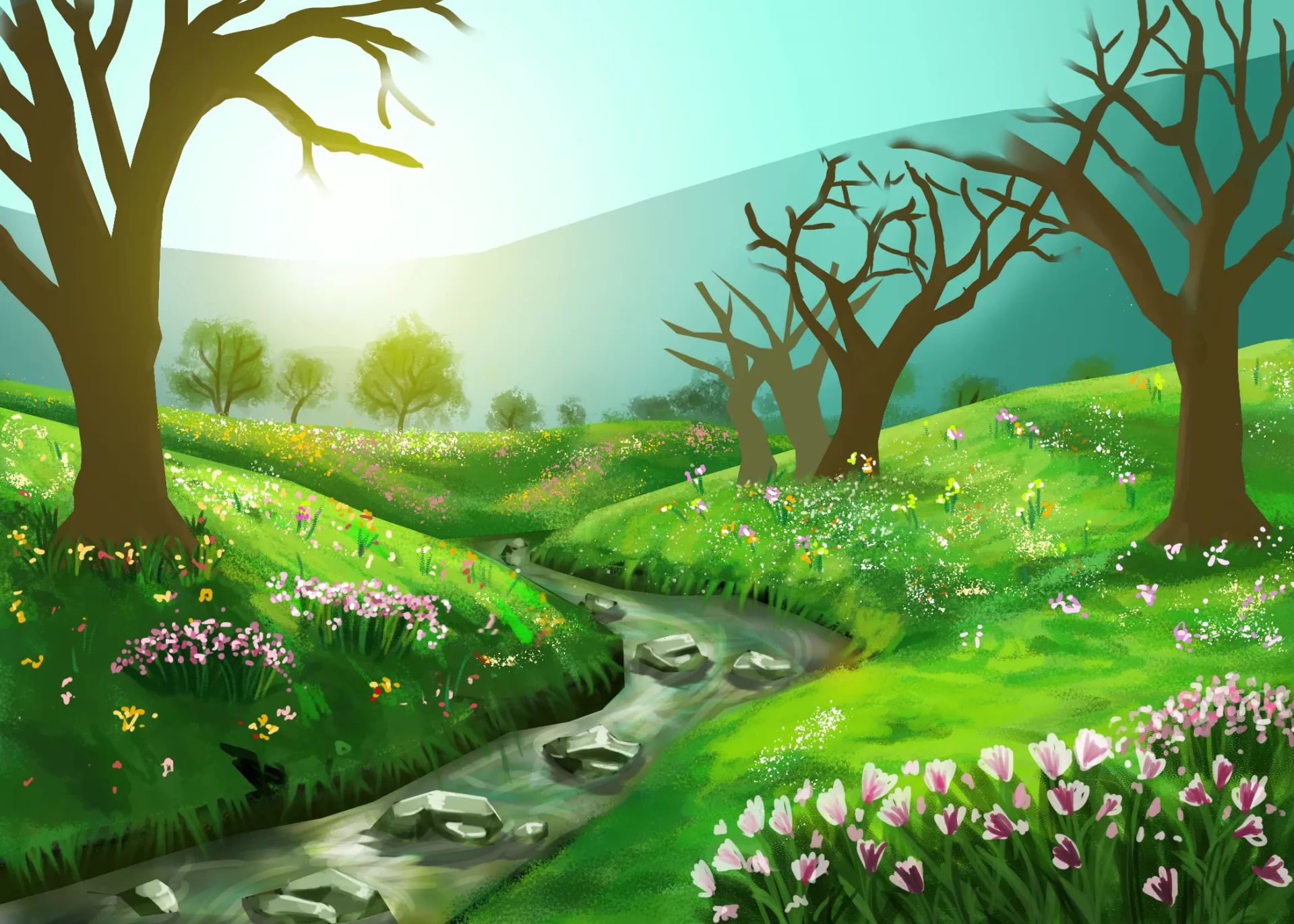
Keep this principle in mind and work on the foliage now: if it is generally darker at the base, make it lighter here towards the middle of the drawing, since the sunlight illuminates at ground level.
In contrast, the leaves facing the viewer will remain darker to emphasize the contrast. To finish, add some golden highlights between the foliage to catch the light and give more depth to your drawing.

Finalizing your spring landscape drawing
Finally, illuminate the trunks: taking the light into account, darken almost the entire trunk and illuminate only the inner edge to create the necessary contrast. Add a few irregular lines to suggest texture, without too much detail, as the quality of the light makes the overall effect softer.
Finally, slightly adjust the light to accentuate the contrast between sunny areas and shady areas.

Congratulations, your spring landscape is complete!
I hope you enjoyed creating it and discovered some useful techniques to approach this type of scene. Keep in mind the key elements of spring: lush vegetation, vibrant flowers, the soft morning light, trees in full vitality, and why not, a few birds or small animals.
And remember: in this type of landscape, the overall impression often takes precedence over the precision of details.
Editor and illustrator: Bryam


Very beautiful
😁☺️😁